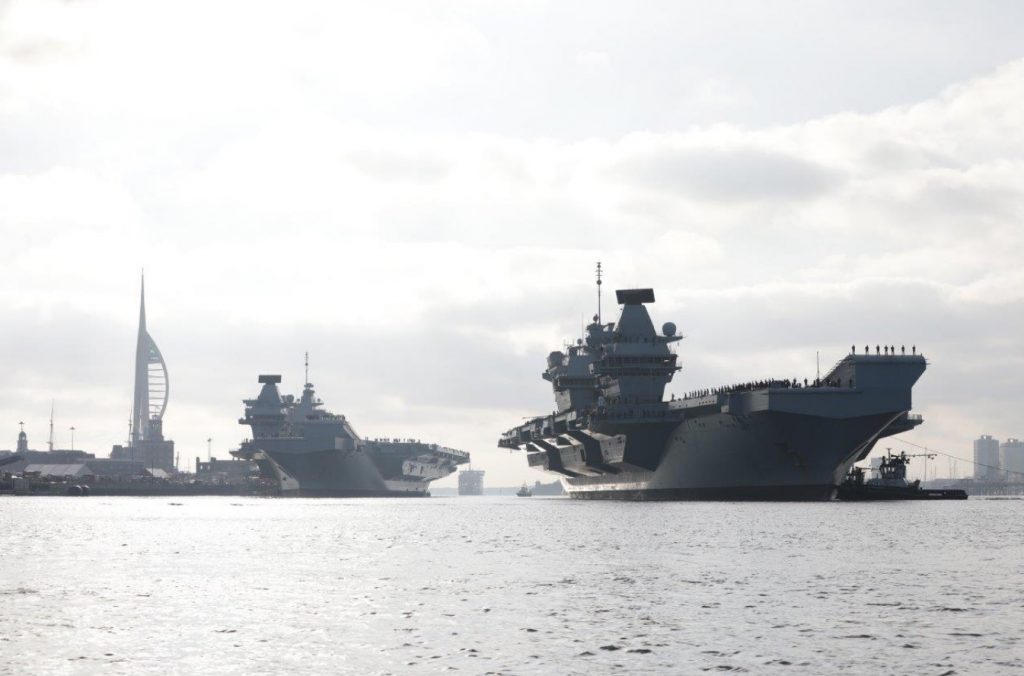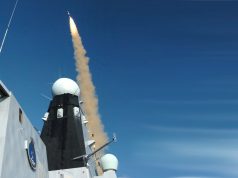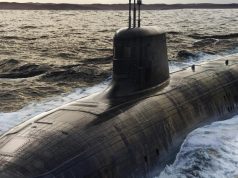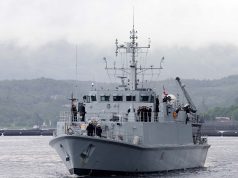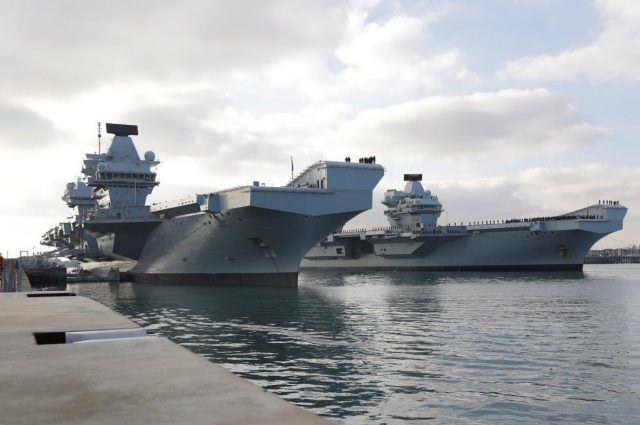
Her Majesty Naval Base Portsmouth became home to two brand new aircraft carriers for the first time as HMS Queen Elizabeth and its carrier strike group returned to Portsmouth on December 4 after three months in the USA.
Following HMS Dragon’s return to Portsmouth earlier this week, the aircraft carrier made her way into Portsmouth – where she was greeted by younger sister ship HMS Prince of Wales.
At the same time two of her escorts, HMS Northumberland and RFA Tideforce, returned to warm welcomes in Devonport. The ships’ flights made their way to their respective homes at RNAS Culdrose and Yeovilton.
The carrier strike group sailed from the UK in August to conduct operational tests with UK F-35 jets from the UK Lightning Force for the first time.
Supporting the strike group units throughout were Merlin helicopters from 820 Naval Air Squadron based out of RNAS Culdrose, providing anti-submarine protection and search-and-rescue (SAR) capability.
Commando Merlins from 845 Naval Air Squadron acted as the aviation workhorses, transporting stores and equipment, providing SAR cover and also landing Royal Marines from 42 Commando’s Lima Company to rehearse how to rescue downed pilots. Merlins from 814 NAS and Wildcat from 815 completed the air group.
The Commanding Officer of HMS Queen Elizabeth, Captain Steve Moorhouse said: “Homecomings are always a special occasion, but to be returning to Portsmouth with HMS Prince of Wales welcoming us home makes this a particularly special occasion.
“This has been an extremely successful deployment for HMS Queen Elizabeth. Embarking UK F-35 Lightning jets for the first time and integrating them within the carrier strike group is a significant milestone and we are well set for an equally demanding 2020 and our first operational deployment in 2021.”
